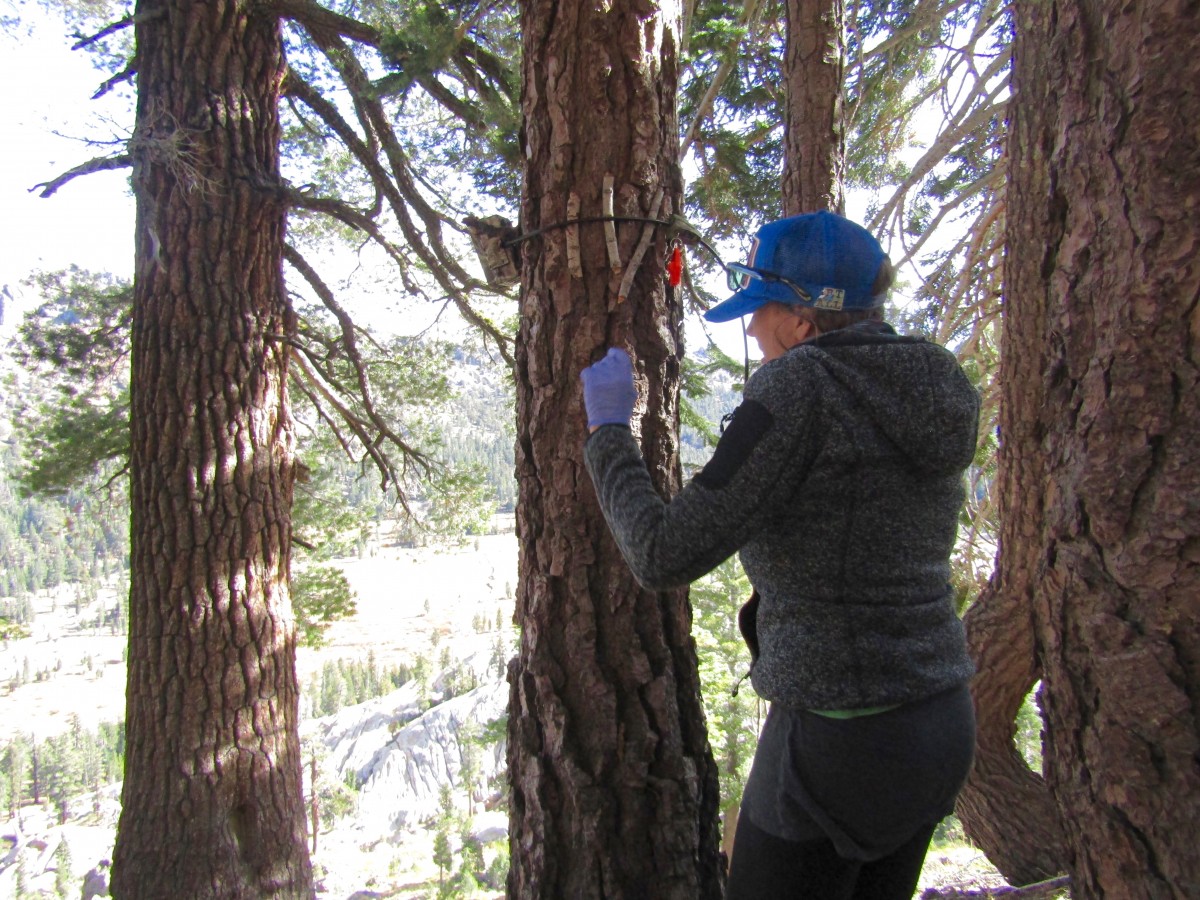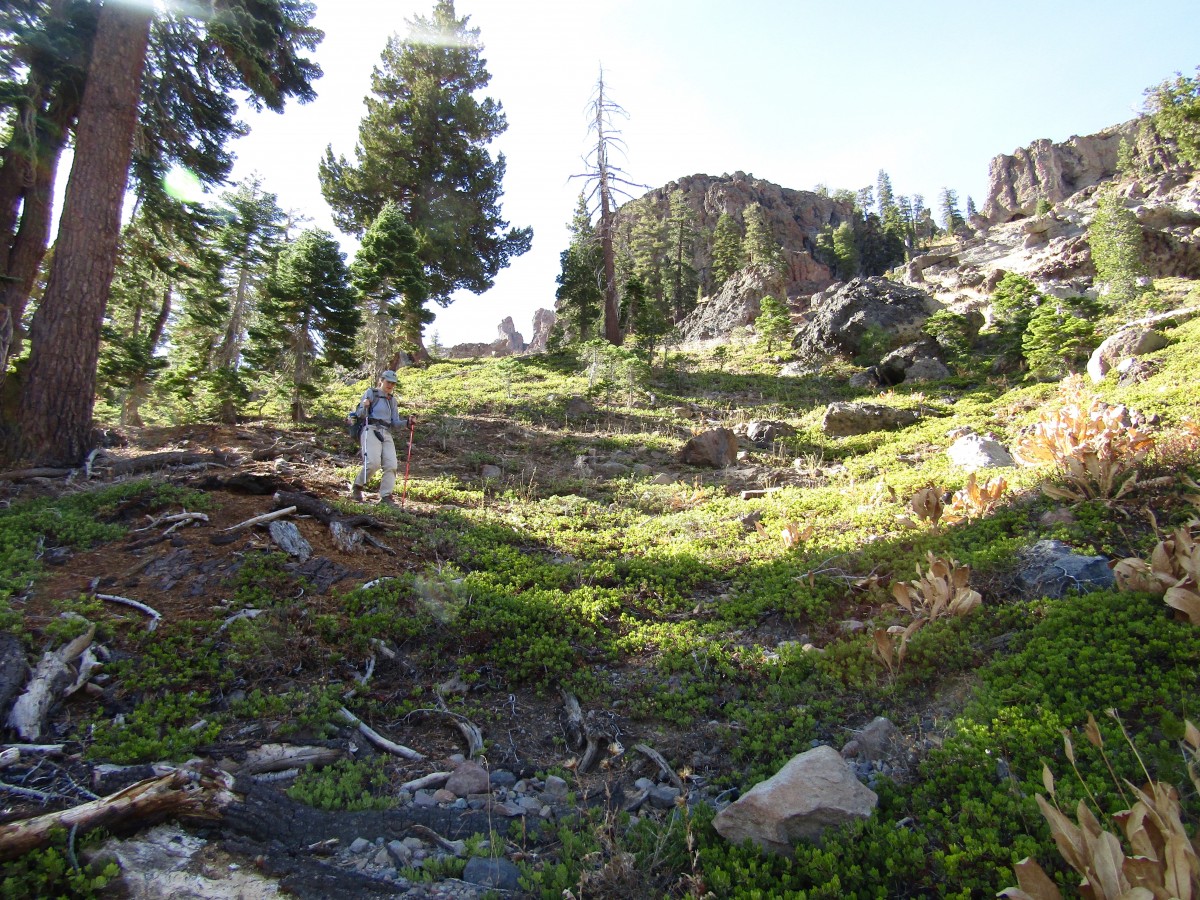We were excited when the Forest Service contacted our Center to request that we set up wildlife cameras, with the goal of capturing photos of the elusive Sierra Nevada red fox. This fox subspecies is one of the rarest mammals in our region, with only two California populations that each consist of fewer than 50 individuals. Known to early naturalists as “the wildest wild creature”, these foxes prefer remote mountainous habitat at, or above, the treeline.
At 7 a.m., we packed up raw chicken, Gusto (a skunky, viscous musk that makes you gag from 5 ft away), and our cameras. We drove out a rutted, icy dirt road, traversing a valley shaded by mountain ridges.


From a distance, we could see some potential camera sites high up on the slopes. We were looking for tree stands near the top of the ridge and areas where the landscape would funnel wildlife past the bait.
The treeline didn’t seem far, until we found ourselves halfway up, balancing on slippery volcanic gravel that constantly threatened to slide us right over a ledge. Our hiking poles barely allowed us to maintain footing and to scramble between sparse patches of brush. Thankfully, we were rewarded near the top by finding a site with potential fox dens, game trails, large old conifers, and a spectacular view.
Adjusting the cameras was another challenge - because each camera will be unmaintained for the winter; we will not be able to correct any placement mistakes. We attached the cameras as high as we could reach on sturdy conifers, to keep them out of the snow. There’s no disappointment like retrieving a camera in spring, excited to see photos of rare wildlife, only to find 1,000 photos of snow melting and refreezing on the camera lens. Likewise, you don’t want endless photos of tree branches swaying in the wind. We spent a while on our tiptoes, straightening the cameras and stabilizing them with twigs to keep them from shifting under heavy snow. We then made sure the odorous bait was within the camera’s view with multiple test photos.
The process was long, but by the time we headed back to the office, we felt like our cameras could withstand rough weather and be ready to photograph the few species that inhabit snowy, high-elevation terrain. In spring, we’ll see whether any Sierra Nevada red foxes visited the stations!

